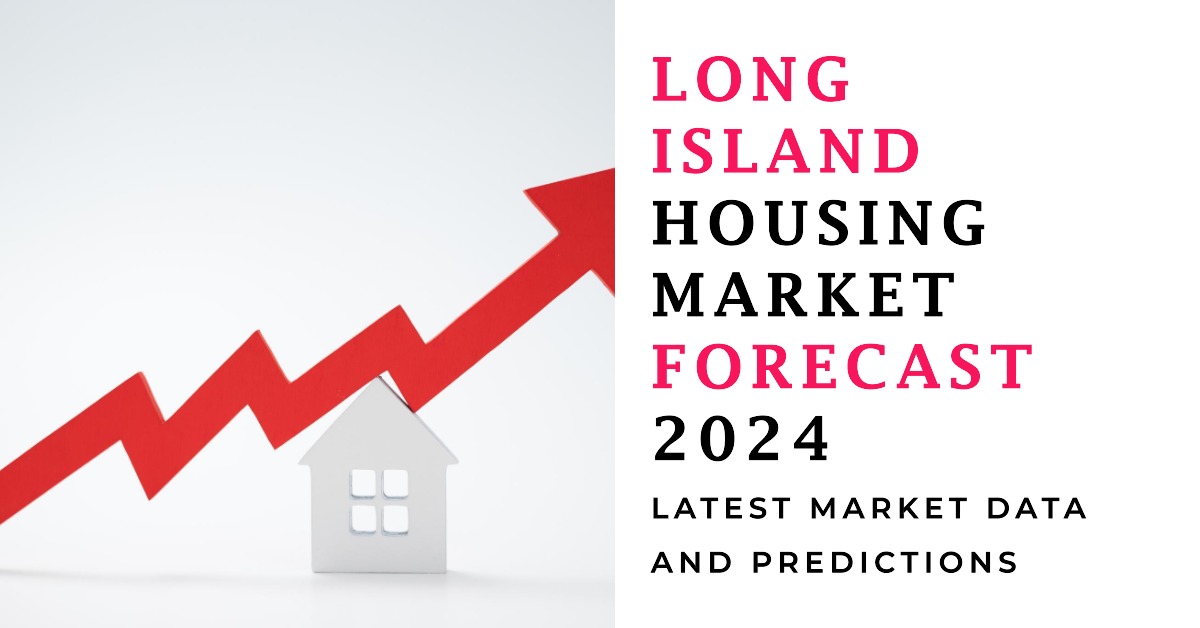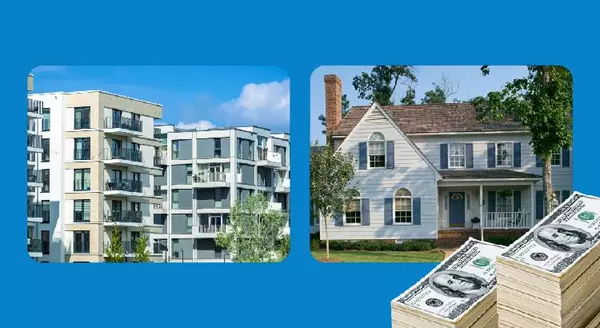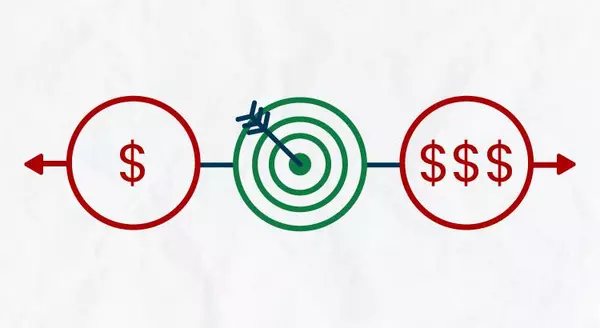Long Island Housing Market Trends and Forecast for 2024

The Long Island housing market in New York has always been a topic of interest, boasting a unique blend of suburban tranquility and urban accessibility. As prospective homebuyers and real estate enthusiasts eagerly watch the market's dynamics, it's essential to explore the current trends and forecasts that shape this vibrant real estate landscape.
Long Island, NY, a renowned residential hub, is witnessing significant growth in its housing market. According to Redfin, with the median sale price of a home soaring to $644,000 last month, marking a 12.0% increase from the previous year, the region showcases a promising trajectory for real estate investors and homeowners alike.
The median sale price per square foot stands at $417, reflecting a 10.9% surge compared to the previous year. This substantial appreciation underscores the desirability of Long Island's real estate and the robust demand for properties within the area.
Long Island's housing market is characterized by steady growth and increasing demand, making it an attractive destination for prospective buyers and investors. The surge in median sale prices indicates a thriving market environment, presenting opportunities for both sellers and buyers to capitalize on the region's burgeoning real estate landscape.
Despite the challenges posed by the broader economic landscape, Long Island's housing market remains resilient, demonstrating resilience and adaptability in the face of external factors. This resilience underscores the region's appeal and stability, making it a sought-after destination for those seeking long-term real estate investments.
Fueling Growth: Factors Behind the Surge
Economic Factors
The economic landscape plays a pivotal role in driving the Long Island housing market's growth. A thriving local economy, coupled with job opportunities and economic stability, contributes to increased demand for housing. This positive correlation between economic health and real estate vitality positions Long Island as an attractive destination for potential homeowners.
Investor Confidence
The steady increase in home prices and the sustained demand for properties showcase the confidence investors have in the Long Island real estate market. This trust is not only reflected in local investors but also draws attention from those looking to diversify their portfolios in a stable and appreciating market.
Market Forecast
Looking ahead, experts predict that Long Island's housing market will continue to show resilience and growth. The region's desirability as a suburban retreat, combined with its accessibility to city centers, positions it well for sustained demand. While factors like interest rates and economic conditions will influence the market, the overall trajectory seems positive.
The ongoing trend of remote work and flexible arrangements might also play a role in driving demand for Long Island real estate. With more people able to work from home, the appeal of spacious homes and larger properties with outdoor spaces has risen significantly. This shift in priorities favors Long Island's housing market, where such properties are more readily available compared to crowded urban settings.
Climate Risks and Considerations
Beyond market trends and prices, it's crucial to consider the impact of climate risks on the Long Island housing market. Redfin's data includes insights into the potential hazards and environmental risks that homes in the area might face. These risks range from floods and storms to droughts and heat waves. The assessment provides valuable information about the likelihood of these risks occurring and how they might change by 2050.
For instance, the assessment indicates that Long Island's heat risk could increase, leading to a higher number of hot days per year. Similarly, storm risk might elevate, affecting the chances of extreme precipitation events. The analysis also examines fire risk, estimating the likelihood of wildfires based on various factors.
Long Island County-Level Housing Market Trends
Long Island is physically composed of four counties, namely Queens, Kings (Brooklyn), Nassau, and Suffolk, with Queens and Kings located in the western portion and Nassau and Suffolk to the east. However, from a cultural perspective, Long Island typically includes only Nassau and Suffolk counties, while the western counties of Queens and Kings are not commonly regarded as part of the cultural concept of Long Island. This dual classification underscores the distinction between the geographical and cultural perceptions of Long Island.
Exploring the Real Estate Market Trends in Suffolk County, NY
Suffolk County, NY, situated on Long Island, is a vibrant and picturesque region known for its beautiful landscapes, coastal charm, and thriving communities. The real estate market in Suffolk County has seen significant shifts and trends, making it an intriguing destination for both homebuyers and investors.
A closer look at the data from realtor.com, Suffolk County, NY presents itself as a balanced market as of March 2024, characterized by equilibrium between buyer demand and housing supply. This equilibrium indicates that neither buyers nor sellers hold a significant advantage in negotiations, fostering a fair and competitive landscape for real estate transactions.
The median listing home price in Suffolk County, NY soared to $795,000, marking a substantial 17.8% year-over-year increase. This surge indicates a robust demand for residential properties in the area, likely fueled by various factors such as economic growth, desirable amenities, and lifestyle offerings.
Despite the significant rise in median listing prices, homes in Suffolk County, NY continue to maintain a balanced market scenario. The median home sold price stood at $597,500, suggesting that properties are selling close to their listed prices. This equilibrium between listing and sold prices indicates a healthy market environment with fair pricing dynamics.
The sale-to-list price ratio for homes in Suffolk County, NY remained at 100% in March 2024. This statistic underscores the notion that properties are fetching prices close to their asking rates, reaffirming the stability and efficiency of the local housing market.
On average, homes in Suffolk County, NY sell after 46 days on the market. This figure reflects a relatively swift sales cycle, indicating high demand and efficient property turnover in the region. Furthermore, the trend for median days on the market has shown a slight decline compared to the previous month, further highlighting the dynamic nature of the Suffolk County, NY housing market.
Nassau County, NY Housing Market
Nassau County, New York, is a vibrant and sought-after region with a rich history, diverse communities, and a flourishing real estate market. In March 2024, the housing market in Nassau County, NY continues to exhibit robust growth, with the median listing home price reaching $800,000, marking a significant 9.7% increase compared to the previous year.
The median listing home price per square foot stands at $472, reflecting the region's desirability among homebuyers. Additionally, the median home sold price sits at $700,000, further indicating the upward trajectory of the market.
The sale-to-list price ratio of 99.23% underscores the competitive nature of the Nassau County housing market, with homes typically selling close to their asking price. This indicates a seller's market, where demand exceeds supply, providing favorable conditions for sellers.
One of the key indicators of market activity is the median days on the market, which currently stands at 39 days. This signifies that, on average, homes in Nassau County, NY are selling relatively quickly, reflecting the high demand for properties in the area. Over the past year, there has been a slight decrease in the median days on the market, indicating a trend towards faster sales.
Nassau County benefits from a strong local economy, supported by diverse industries ranging from finance and healthcare to technology and education. The presence of major corporations and institutions provides residents with ample employment opportunities, attracting individuals and families to the area.
Located in close proximity to New York City, Nassau County offers residents the convenience of urban amenities while maintaining a suburban lifestyle. Access to top-rated schools, cultural attractions, and recreational facilities adds to the region's appeal, making it an attractive destination for homebuyers seeking a high quality of life.
Despite the strong demand for homes, Nassau County faces challenges related to housing inventory shortages. Limited supply, coupled with high demand, has contributed to competitive bidding wars and rising property prices. However, ongoing development projects aim to address this issue by introducing new housing stock to meet the growing demand.
The Nassau County housing market is expected to continue its upward trajectory in the coming months, driven by sustained demand and favorable economic conditions. While rising prices may pose affordability challenges for some buyers, the region's appeal and strong market fundamentals are likely to attract continued interest from investors and homebuyers alike.
Will Prices Drop in Long Island Housing Market?
The current state of Long Island's real estate market might lead to concerns about a potential market crash. Given the combination of current inventory levels and the upward trajectory of mortgage rates, the possibility of a market downturn in Long Island, and even across New York as a whole, might not seem far-fetched.
However, the likelihood of a housing market crash remains relatively low. Presently, Long Island is grappling with inflated property prices, elevated interest rates, and limited housing supply, factors that collectively hint at the potential for a housing bubble. Such a bubble forms when demand surges due to relatively modest price increases amid constrained supply.
Nonetheless, the escalation of home prices can eventually reach a threshold where they become unaffordable for the average homebuyer.
Despite this, a full-blown crash is unlikely primarily due to the persistent shortage of available homes. A crash scenario would necessitate an increase in both supply and demand, effectively deflating the so-called “bubble.” Yet, an upsurge in supply appears improbable unless mortgage rates drop significantly or more homeowners decide to list their properties despite prevailing interest rates.
Having established that a severe market crash isn't highly probable, does this mean Long Island presents a favorable investment opportunity? The answer hinges on individual circumstances. Certain potential buyers might opt to delay purchasing until the market stabilizes further.
Beginning with home sales, while property values have exhibited a steady upward trajectory in recent months, the number of actual transactions remains subdued due to affordability concerns and a dearth of available homes.
Nevertheless, Long Island still holds allure for various individuals, being less densely populated than certain other New York locales. Furthermore, its proximity to New York City amplifies its appeal to prospective buyers. Despite the ongoing challenges, Long Island is expected to retain its appeal in the real estate market, albeit with certain hurdles that both buyers and sellers must navigate.
Some experts suggest a recent uptick in activity over the past months, characterized by heightened foot traffic during open houses and a modest increase in buyer investments. These trends signal a gradual recovery within the Long Island market.
Considering these insights, it's conceivable that the market will continue its growth trajectory throughout much of 2023, creating opportunities for both buyers and sellers. However, the persistent challenges posed by elevated mortgage rates and constrained inventory are anticipated to temper this growth.
--
originally published here, credit Norada Real Estate blog
Categories
Recent Posts










